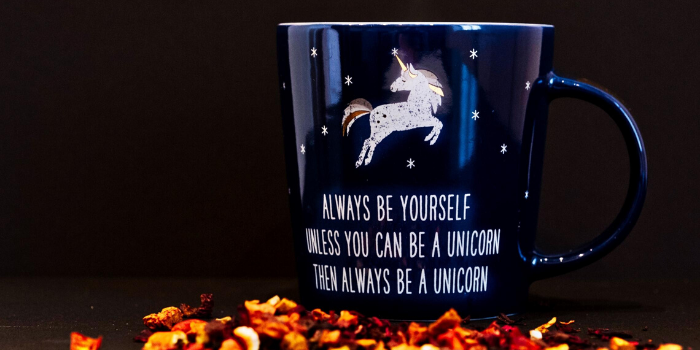Early Bird Deadline
30 November 2025
Judging
Date
23 & 24 March 2026
Winners Announcement
22 April 2026
30 November 2025
23 & 24 March 2026
22 April 2026

By : Alistair Morrell
An open market… myriad sources of supply… a hugely competitive environment… the pressure on the supplier to pass muster… yet there’s still the opportunity for both parties to do good business. It could be seen that UK Wine merchants are looking for Unicorns from producers, who are in the common British vernacular “two a penny”.

The UK wine market is already one of – if not the – most competitive that exists today: historically with little indigenous vineyard production, so no home-grown market to protect, it’s also one of the most open, calling on sources of supply from around the world.
This clearly represents an opportunity for any wine supplier, however, this sensitive market requires a careful appreciation of the market dynamics, quality, pricing, building trust and points of difference.
So much competition presents a potentially difficult situation for the supplier who, more than likely, will find any new wine offer being positioned directly against similar, competing brands, or similar brands that might be selling for less. Or the merchant will be able to argue that a shelf is reserved for another supplier who’s already ahead in the queue, so to speak, or that the current stocking programme is currently ‘locked in’.
The odds are probably stacked in favour of the merchant, but that’s not to say the UK market doesn’t offer the potential for the supplier, but it pays to understand the particular dynamics at play – so what can make that sale easier and what influences a UK wine merchant when selecting a new wine brand?
The UK wine merchant operates within the economic dynamic of the UK’s wine market and this will clearly influence any buying decision.
Wine sales are worth just shy of £11 billion a year – the UK is the 6th largest wine market in the world and the world’s 2nd largest trader by volume (behind Germany, which has a somewhat larger population and re-exports much that imports) and by value (behind the USA, with a population that’s over 4 times greater). Within that dynamic, however, the volume of wine sales is falling (except for Prosecco in the sparkling wines sector), although total value is up, some of which can probably be attributed to increases in the UK duty rate levied on wine.
What is true, however, is that, whilst consumers may be drinking less, partly down to changes in demographics, with younger people drinking less and less often, not to say the ‘Brexit effect’ on the value of the pound, particularly the import cost pressures resulting from changes in currency rates, together with the effect that uncertainty has on people’s spending, as well as those tax increases, there’s a definite shift to drinking better, with wine drinkers choosing better quality brands. Wine sales from some countries are faring better than others in terms of market share, too, with ‘New World’ wines from both Australia and New Zealand leading the way.
Lastly, many if not most, wine merchants will also stock spirits, and the growth of this sector, especially a marked escalation in the volume of gin being produced and sold (up nearly 40% year-on-year, with sales now totalling 60 million bottles), also adds pressure on wine sales with spirits vying for the very same consumer pound.
The wine merchant has to take into account the constraints, as much as the opportunities for businesses, that the market dynamic provides.
When deciding whether to take on a new wine brand, what’s important for the wine merchant is whether customers are going to buy the wines being stocked.
The figures clearly show that consumers are tending more and more to choose quality over quantity, drinking less, but better, and are prepared to pay a bit more to buy what they know they (and their friends) like better. In some senses, this has been driven by premium wine promotions being run by supermarket chain discounters – double value, you might say, in terms of what it costs and the taste it delivers.
The UK wine merchant will need to take account of this trend and the competitive sales environment in any new wine selection process.

The UK has the 3rd highest wine duty rate in the EU at £2.23 per 75cl bottle and, with the average retail price of a bottle at £5.68 (2018), now accounts for getting on for half of the cost – no wonder that over 40% of all alcohol duty collected across EU member states is collected by the UK Chancellor.
Pricing is a key factor in a market with so much choice and the merchant needs to be as certain as possible that there’s money to be made when taking on any new brand.
Pricing wines to meet desired consumer price points, notwithstanding a move to buying higher priced, better quality wine, the ‘value for money’ constant, the competitive sales environment, allied to trade margin requirements, all have to be factored in.
The consistency of quality, as well as supply, are givens and the best supplier relationships are based on the notion of partnership. The wine merchant will be looking to ensure there will be no stock issues, so will want to ensure on-going availability, at the agreed price (in whatever currency the deal has been struck), and that the logistics and shipping methods are all compatible so the wine is available when required. The merchant is also likely to want guarantees that, along with programmes to support sales, the supplier will be able to fulfil any orders needed.
Creating points of difference – standing out from the crowd – is actually an on-going marketing requirement for every product, in every market, but especially so in this most competitive sales situation.
Other than the basic tenet of the meeting, if not exceeding, quality expectations at every price point to help build sales, as well as volume through repeat purchase, the merchant is certainly going to be more amenable if the supplier is prepared to provide on-going brand support as a means of building consumer visibility.
This could be as simple as a point of sale, but in today’s digital age, working with the merchant to develop a mutually beneficial social media programme is probably what it takes.
Being different doesn’t mean quirky, but it can also pay to have to discuss pack formats, like half bottles, or magnums, and labels that have to possess that all-important shelf presence so they work in what is a super-competitive sales environment and are relevant to the target audience.
With the availability of wines from many sources and no lack of supply, the pressure is on the merchant to make the right choices: it’s up to the supplier to create an offer that cuts through the competitive noise – but the market is there and there’s still room for both parties to make money.
 The article is contributed by Alistair Morrell, Wine Inspector, wine industry consultant, journalist and, commentator. Over 30 years as a wine business professional, Alistair shares his global knowledge, network, and experience of growers, importers, distributors and buyers.
The article is contributed by Alistair Morrell, Wine Inspector, wine industry consultant, journalist and, commentator. Over 30 years as a wine business professional, Alistair shares his global knowledge, network, and experience of growers, importers, distributors and buyers.
Show your wines where it matters. Get your products tasted by top sommeliers, buyers and experts at the London Competitions — enter now.